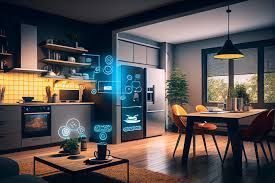Smart Homes
The Future of Living: Installing a Smart Home System
Smart home technology has revolutionized the way we interact with our living spaces. From voice-activated assistants to intelligent security systems, a smart home installation offers unparalleled convenience, efficiency, and security. If you're considering upgrading your home with smart technology, this guide will walk you through the key benefits, essential components, and installation tips.
Why Upgrade to a Smart Home?
- Convenience – Control lighting, temperature, security, and entertainment systems from your smartphone or voice assistant.
- Energy Efficiency – Smart thermostats, lighting, and appliances optimize energy use, reducing utility bills.
- Enhanced Security – Smart locks, cameras, and alarm systems offer real-time monitoring and alerts for added peace of mind.
- Home Automation – Create schedules and routines that automate daily tasks, from morning wake-ups to bedtime routines.
- Increased Property Value – A smart home system can make your home more appealing to buyers and increase its market value.
Essential Smart Home Components
1. Smart Hub or Voice Assistant
- Acts as the central control point for all connected devices.
- Popular options include Amazon Alexa, Google Home, and Apple HomeKit.
2. Smart Lighting
- Wi-Fi or Bluetooth-enabled bulbs and switches allow remote control and scheduling.
- Adjustable brightness and color settings enhance ambiance and energy efficiency.
3. Smart Thermostat
- Devices like Nest or Ecobee learn your preferences and adjust temperatures automatically.
- Remote access via smartphone apps enables energy savings when away from home.
4. Smart Security System
- Includes smart locks, video doorbells, and security cameras.
- Provides real-time monitoring, motion detection, and remote access for added security.
5. Smart Appliances
- Wi-Fi-connected refrigerators, ovens, and washing machines offer remote control and automation features.
- Many appliances integrate with voice assistants for seamless operation.
6. Smart Plugs and Power Strips
- Convert standard devices into smart devices with remote on/off capabilities.
- Helps reduce energy consumption and eliminates standby power waste.
Smart Home Installation Tips
- Plan Your Smart Home Ecosystem – Choose a compatible platform (Amazon Alexa, Google Home, or Apple HomeKit) to ensure seamless integration.
- Start with Essentials – Begin with a few key devices like smart lighting or a thermostat before expanding to a full smart home setup.
- Ensure Strong Wi-Fi Coverage – A stable internet connection is essential for smooth operation; consider a mesh Wi-Fi system for whole-home coverage.
- Set Up Automation and Routines – Use smart apps to program automation, such as turning off lights when leaving home or adjusting the thermostat based on occupancy.
- Regular Updates and Maintenance – Keep your devices updated with the latest firmware for security and performance enhancements.
Conclusion
A smart home installation enhances comfort, security, and energy efficiency while simplifying daily routines. Whether you start small with a few smart bulbs or go all-in with a fully integrated system, the benefits of smart home technology are undeniable. Ready to upgrade? Take the first step and transform your home into a connected, intelligent space today!


Share On: